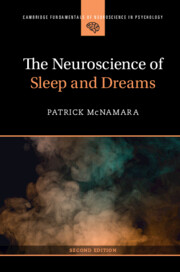Book contents
- The Neuroscience of Sleep and Dreams
- Cambridge Fundamentals of Neuroscience in Psychology
- The Neuroscience of Sleep and Dreams
- Copyright page
- Dedication
- Contents
- Figures
- Tables
- Preface
- Acknowledgments
- Chapter One What Is Sleep?
- Part I Sleep
- Chapter Two From Biological Rhythms to the Sleep Cycle
- Chapter Three Expression of Sleep across the Human Lifespan
- Chapter Four Characteristics of REM and NREM Sleep
- Chapter Five Sleep Disorders
- Chapter Six Theories of REM and NREM Sleep
- Part II Dreams
- References
- Index
- References
Chapter Six - Theories of REM and NREM Sleep
from Part I - Sleep
Published online by Cambridge University Press: 06 April 2023
- The Neuroscience of Sleep and Dreams
- Cambridge Fundamentals of Neuroscience in Psychology
- The Neuroscience of Sleep and Dreams
- Copyright page
- Dedication
- Contents
- Figures
- Tables
- Preface
- Acknowledgments
- Chapter One What Is Sleep?
- Part I Sleep
- Chapter Two From Biological Rhythms to the Sleep Cycle
- Chapter Three Expression of Sleep across the Human Lifespan
- Chapter Four Characteristics of REM and NREM Sleep
- Chapter Five Sleep Disorders
- Chapter Six Theories of REM and NREM Sleep
- Part II Dreams
- References
- Index
- References
Summary
Although we know a lot about sleep, there is no scientific consensus on its function or functions. Its functions, however, must be extraordinarily significant, given that it renders us vulnerable to predators each time it overcomes us. It is involuntary. Everyone must eventually succumb to sleep or die. We must have it as surely as we must have oxygen, food, and water. But we do not know why.
- Type
- Chapter
- Information
- The Neuroscience of Sleep and Dreams , pp. 103 - 126Publisher: Cambridge University PressPrint publication year: 2023

